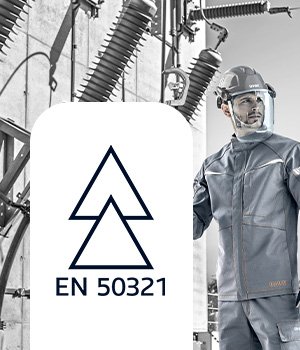Stamp out electrical injuries with the right safety footwear
Meeting European safety standards can seem arduous but – as a comparison with US standards on protective footwear for electrical hazards shows – it can be the difference between life and death.
The standards for PPE in the UK and EU are extremely demanding. For industry professionals who are obliged to follow these standards, they might sometimes feel like an unnecessary burden. However, it is important to remember that they have been put in place for a very good reason.
Protection against electric currents offers a prime example. Electricity can travel long distances, especially in wet conditions, and presents a risk of serious injury or death. The Health and Safety Executive’s construction statistics in Great Britain for 2023 show 6% of fatal injuries over the 2018/19 to 2022/23 period were caused by contact with electricity or electrical discharge.
Safety shoes play a vital role in protecting against electrical hazards, so it is important that they are manufactured according to the highest standards.
Selecting the correct safety footwear
Workers faced with electrical hazards will generally be required to wear insulating footwear along with other insulated PPE. The footwear must be made with dielectric materials that serve to prevent the currents passing through the body.
Safety shoes may be marked with ‘C’ (partly conductive) or ‘A’ (anti-static) under EN ISO 20345:2022. Conductive footwear helps to dissipate static away and has an electrical resistance of up to 0.1 Megaohms. Anti-static footwear is used to dissipate electrostatic charges to the ground and has an electrical resistance between 0.1 and 1,000 Megaohms. However, neither is designed to offer adequate protection for those working with electrical hazards.
In the UK and Europe, PPE for protection against electric currents belongs to category III products (Category 3 PPE: life-threatening risk, protects against the risk of death) according to the PPE Regulation 2016/425 In addition to the type approval, there must also be an agreement on quality monitoring with a notified body.
In the European body of standards, EN 50321-1 is currently the only one that deals with the electrical insulation of footwear. Under EN 50321-1, insulating footwear for live working must pass stringent tests in order to qualify for a “double triangle” symbol. The standard covers a range of six classes from “00”, which allows for a maximum working voltage of 500V, to “4”, which allows for a maximum working voltage of 36kV.
Test standards
To meet the requirements for a double triangle marking under EN 50321-1, polymer boots or overshoes are prescribed. Rubber boots may be uncomfortable but, if you strike an electric cable, they will provide the best protection. Sewn shoes made of leather or similar materials are completely excluded as they will conduct electricity when they become wet.
The footwear must be tested in a water bath to assess its insulating properties. The soles must also pass this conductivity test after being penetrated by a nail to ensure they will protect users even in the event they become perforated. Only footwear that meets this standard has a presumption of conformity in the sense of the PPE regulation.
By comparison, the standards in countries including America and Australia are less rigorous. The American ASTM standard is used to determine the dielectric strength of a shoe sole and results in a “EH” (electrical hazard) marking, but the test process does not require the sole to be penetrated. In addition, while EN 50321-1 requires the material to be polymer, the ASTM standard allows for the use of a recycled plastic upper that can be vulnerable to melting. As such, the ASTM standard is not valid in Europe and does not have a presumption of conformity with the PPE regulation.
Despite this, some suppliers are using the ASTM standard as a route to market in the UK – leaving unwitting users exposed to unnecessary risks. Anyone purchasing or wearing footwear to protect against electrical hazards should therefore take the time to ensure that the products have been certified under EN 50321-1.
Safety first
At uvex, we do not supply footwear that meets the requirements for protection against electric current under PPE category III. Our safety footwear is all certified to category II only and should not be used in workplaces that feature electrical hazards.
Ultimately, it’s about education. Protecting people is our mission, our responsibility and our passion. We want to help build awareness – and ensure that workers always have the best possible protective equipment for the specific hazards they face.
About uvex group
The uvex group unites four companies under one roof: the uvex safety group, the uvex sports group (uvex sports and ALPINA), the Filtral group (Filtral and Primetta) and Protecting People GmbH for the B2C business. The uvex group is represented by 49 branches in 22 countries and produces by conviction with a focus on Germany. 60 percent of the nearly 3,000 employees (as of FY 2020/21) are based in Germany. uvex is a global partner to top international sports as an outfitter to countless top athletes. The guiding principle of protecting people is both a mission and an obligation. To this end, the uvex group develops, produces and sells products and services for the safety and protection of people in the professional, sports and leisure sectors.

Sign up to our newsletter to receive information about our latest products, services and other interesting highlights
Sign up now
